Illustrated Review: Breaking down the Los Angeles Kings' overtime success

When the Los Angeles Kings missed the Stanley Cup Playoffs in 2015, it marked the first time since 2009 they didn’t play past the regular season.
There were the Kings: the best score-adjusted possession team in the NHL, fifth in expected goals-for percentage, fourth in scoring chances for, etcetera. The optics and numbers portended a playoff team, but the standings told a different story.
What really did Los Angeles in was one specific column in the standings: 'OT.'
The Kings lost 15 games that went beyond regulation that season: seven in overtime, and eight in shootouts. Compare that to the three wins they garnered beyond 60 minutes, and Los Angeles pocketed the extra point 16.7 percent of the time.
Finishing with 95 points, two behind the Calgary Flames who claimed the third spot in the Pacific Division, if the Kings finished at .500 in games that went to overtime, and Los Angeles would have ended up even in points with the Vancouver Canucks, who finished second in the division.
After a fresh start, Kings' Peter Budaj proving he belongs at NHL level
In many respects, luck was not on Los Angeles's side that year. In shootouts, which are a virtual coin flip, the Kings finished 2-8. According to Hockey Reference, the 15 overtime losses tied the 11th most all time for a single season.
So though it would have behooved the Kings to not have a .167 win percentage in overtime games, again, in some respects a byproduct of sour luck, the NHL threw a curveball by changing the overtime format to 3-on-3 the following season.
But since overtimes in the NHL have begun with six skaters total, no team has won more games than the Kings’ 21. The Chicago Blackhawks come in next at 18. The Kings four losses in 3-on-3 are also the fewest in the league.
Much more unpredictable than 4-on-4, the NHL's new overtime format, much like the shootout, can play out like a coin flip. The Kings though, have played the role of Harvey Dent more than Two-Face.
By the Numbers
The Kings have very much been the possession darlings of the NHL since 2010. With a Corsi-for percentage of 55.09 since the turn of the decade, the next closest team (Chicago) is plus-2,588 in shot attempts, compared to the Kings' plus-4,260.
So Los Angeles took its foolproof strategy of "never don't have the puck" and carried it into the 3-on-3, where Los Angeles has a Corsi-for percentage of 58.01, second-best in the NHL.
This season the Kings have become even more dominant: a Corsi rating of 67.86 percent in overtime, with nine goals for, and one against.
Illustrated Review: Why Patrick Maroon is such a good fit for Connor McDavid
Yet the rest of the numbers are rather incongruous over the past two seasons. The Kings have produced 25 scoring chances, versus 22 against. Their expected goals-for percentage is 51.53. It's a small sample — just over 86 minutes —, which can always explain numbers that are all over the map.
What the Kings have done though is spend fewer minutes per overtime session than most teams in the NHL. Los Angeles averages 2.39 minutes per 3-on-3 OT, the fifth lowest in the NHL.
Three Points of the Crown
A third of the Kings' 21 3-on-3 goals have come from the stick of forward Jeff Carter. Another third have come from Tanner Pearson (four) and Alec Martinez (three).
So perhaps it should come as no surprise that in the 10 overtime games the Kings have won this season, at least one of those three have been on the ice and factored into the goal. In the one loss, against the Dallas Stars, it was Anze Kopitar, Marian Gaborik and Drew Doughty on the ice.
• Carter: On-ice for six of 10 overtime goals-for, four goals, one assist
• Pearson: On-ice for six of 10 overtime goals-for, two goals, three assists
• Martinez: On-ice for six of 10 overtime goals, one goal, two assists
It doesn't seem a stretch to say these three skaters have found some form of success in three-on-three. How they've become lethal manifests itself in a few different ways.
Half-Court Offense
So much of 3-on-3 can be trading odd-man chances for and against. There are times though when play breaks down to a calmer, slower, in-zone style offense.
With only six skaters below the blue line as opposed to 10, there's significantly more space to work with, and the Kings have found ways to manipulate that space to create scoring chances.
On this goal, Carter finds a soft spot away from three Philadelphia Flyers skaters after Doughty runs a pseudo-pick through the defense.
The Kings are going to force the Flyers to chase them around the offensive zone, beginning with a stretched entry taking advantage of the horizontal space. Carter swings out wide, and with Philadelphia clogging the middle of the ice, it forces defenseman Brandon Manning to swing out wide.
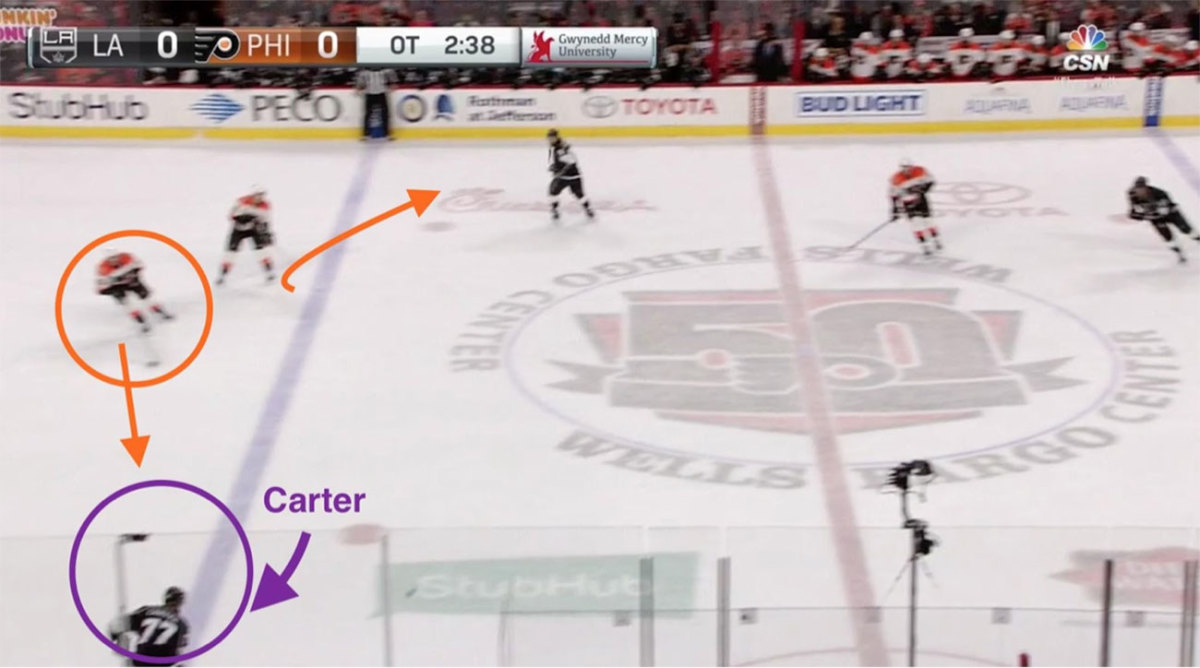
Now Carter and Kopitar are going to criss-cross along the blue line, with Carter leaving the puck for his teammate. Doughty pops up into the high slot, and the Kings are creating chaos with interchanging spacing, forcing the Flyers to navigate around the mess of bodies.
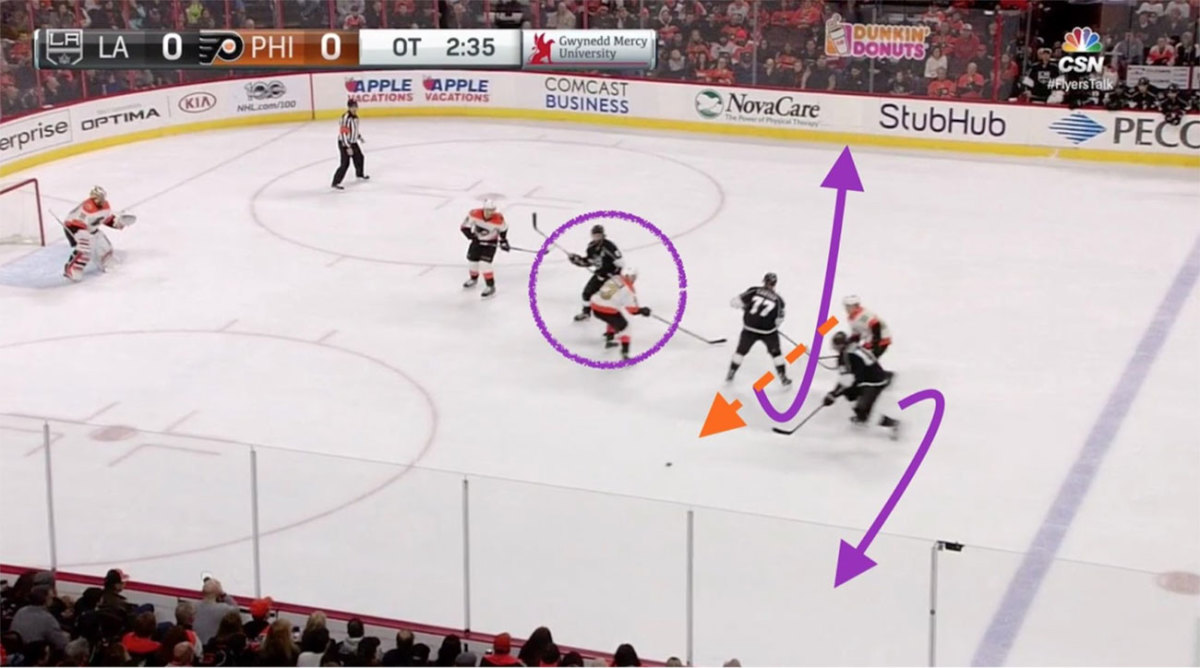
For the second time, Carter and Kopitar cross close to the blue line. The difference here is Doughty is positioned below the goal line, and Brayden Schenn has to stay with him. Now, when Kopitar turns the corner, he's going to have acres of ice to skate into with Schenn anchored down low.
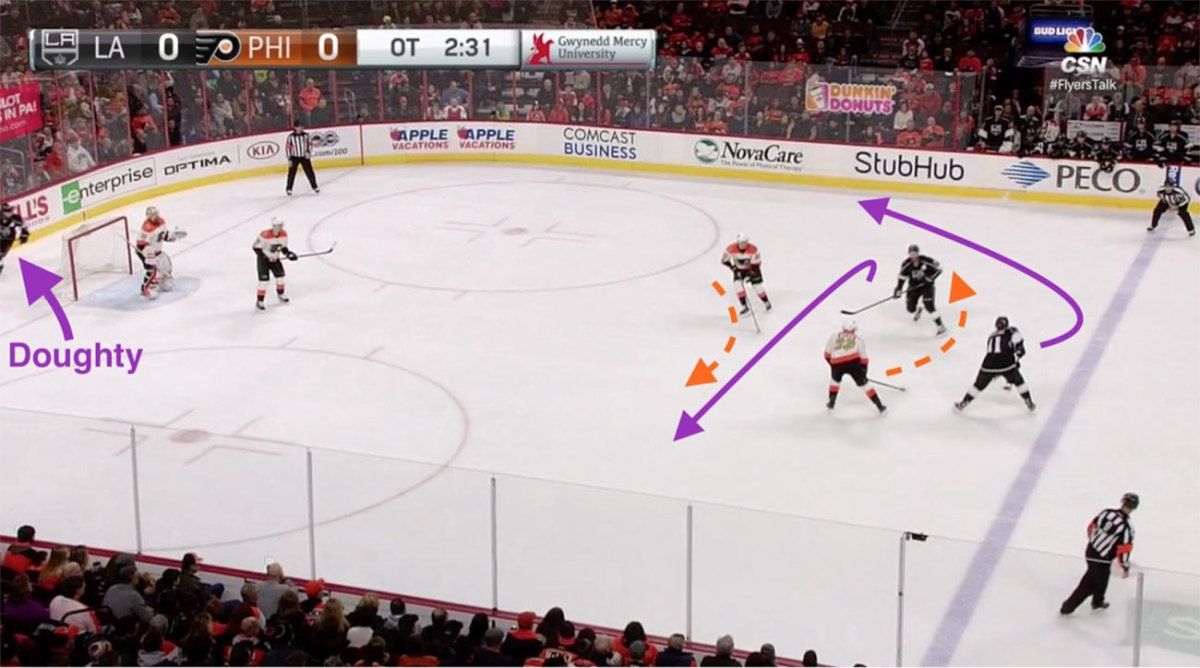
Doughty, who doesn't touch the puck this entire sequence, is a key ingredient to making it work. Kopitar turns the corner and gets a step on Dale Weise. Doughty again flashes through the slot, this time setting a subtle pick for Carter to sit in the low faceoff circle undetected. By rotating toward the blue line, Doughty also ensures that the Kings will at least have one skater back should possession change hands.
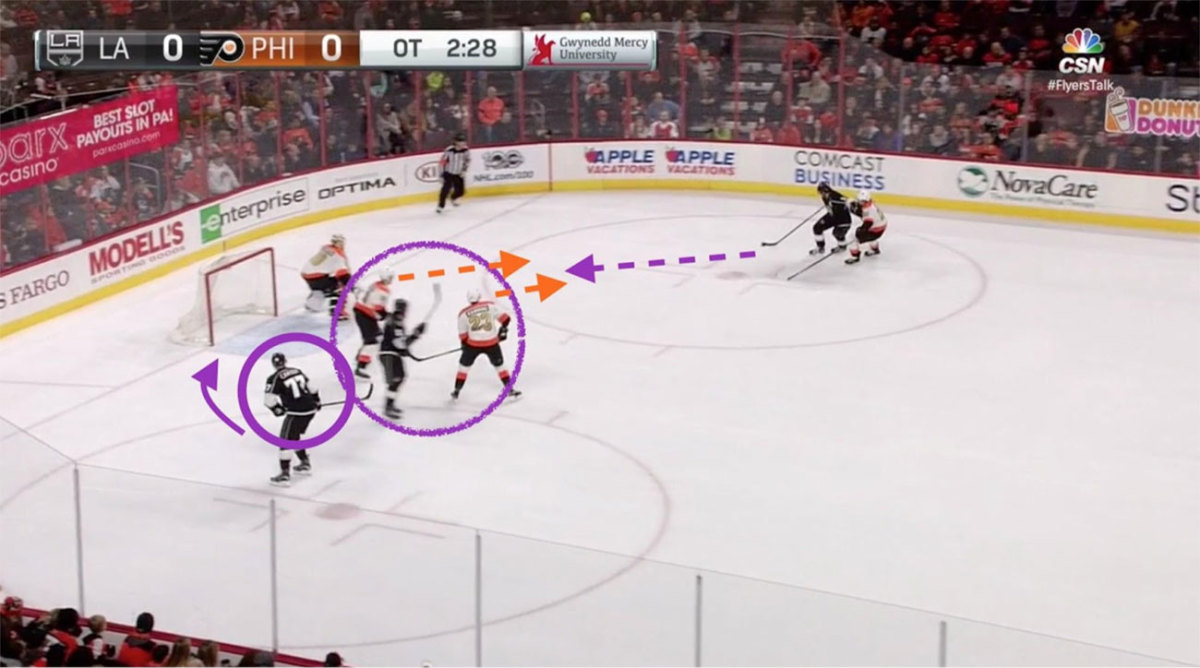
By the time Manning realizes he has over-rotated and Carter is by himself behind the play, Kopitar is in the process of making a slot-line pass from less than 10 feet away from the goal.
Carter keeps his weight shifted toward center ice, and his right skate above the icing line, giving him a chance to shoot the puck on target.
The Kings do everything in overtime very efficiently, capitalizing on every possession, cashing in on most odd-man rushes.
Leading the way is the trio of Carter, Pearson, and Martinez, who have figured out how to use spacing to their advantage in overtime, and how to tilt the ice in Los Angeles's favor.
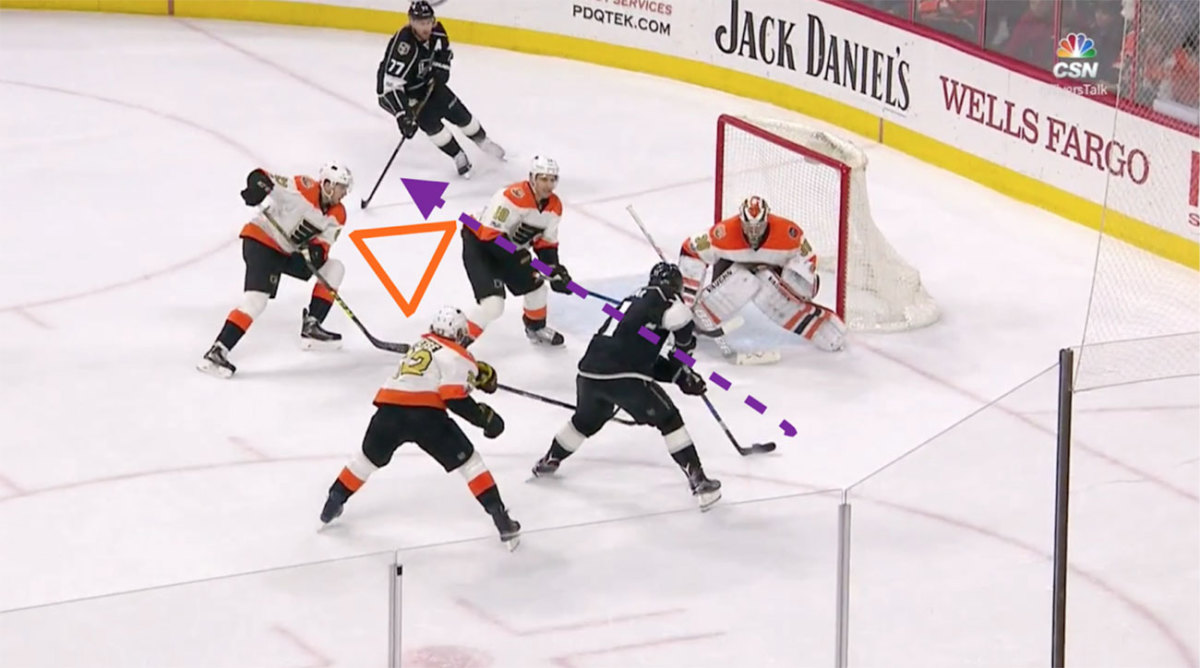
Off the Rush
It's nearly impossible to watch a 3-on-3 sessions without seeing an odd-man rush. From shots that miss the net, to turnovers, to poorly executed changes on tired legs, scoring chances in transition are a staple of the NHL's new overtime.
A deeper look at the Tampa Bay Lightning struggles
The Kings though have been middle-of-the-road in terms of generating scoring chances in 3-on-3, tied for 14th in the NHL with eight over the past two seasons, according to Corsica.Hockey. Rate-wise, they're not much better, producing 11th in the NHL with 17.59 per 60 minutes.
No team shoots a higher percentage at 3-on-3 than the Kings at an astronomical 50 percent. Likewise, the Kings lead the NHL with 19.79 goals-for per 60 minutes in the NHL's new overtime.
So when Los Angeles is getting chances, it's burying them.
What catalyzes this odd-man rush is a bad turnover by the Sharks. Kevin Lebanc plays the puck to where he thinks Logan Couture is skating, but ends up playing it right to Carter.
There's never a good time for this type of turnover in overtime, but while this is happening, Kopitar is going off for a change to the far bench, meaning a Kings skater will hop over the boards, Carter with the puck pushing forward, and one Shark back.
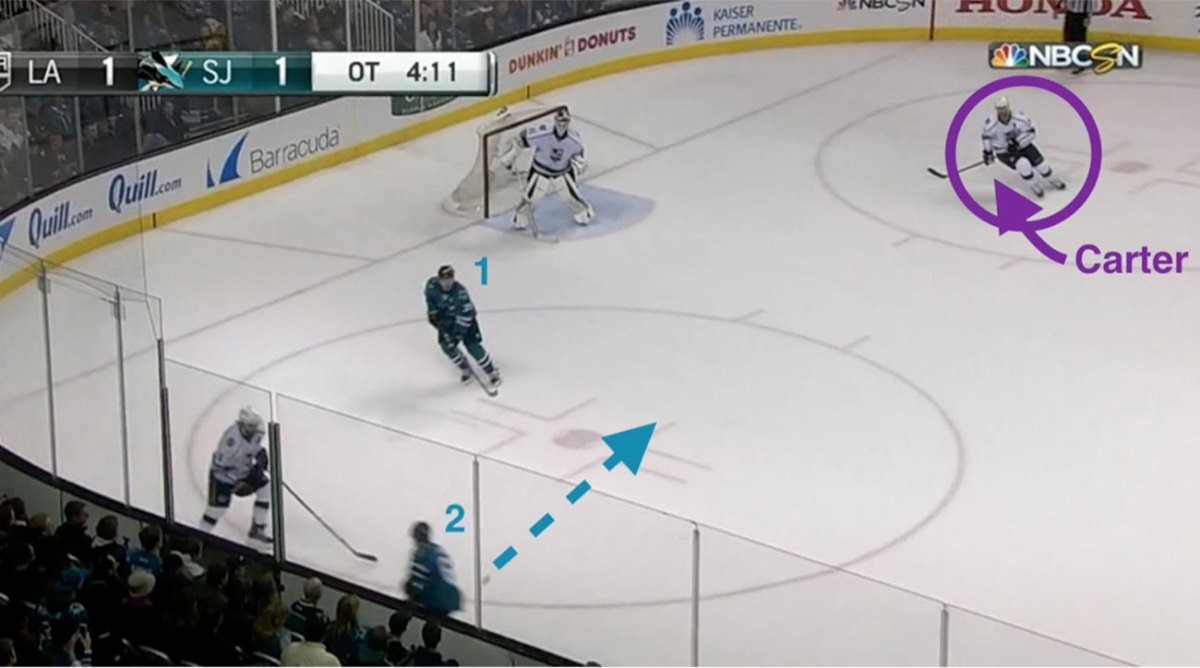
Carter and Pearson hit the blue line with a two-on-one advantage. Defenseman Justin Braun is trying to split the difference in space, shading toward Carter, the puck carrier. With his head up, Braun can see Couture busting to get back, but he's still not in the vicinity of making an impact.
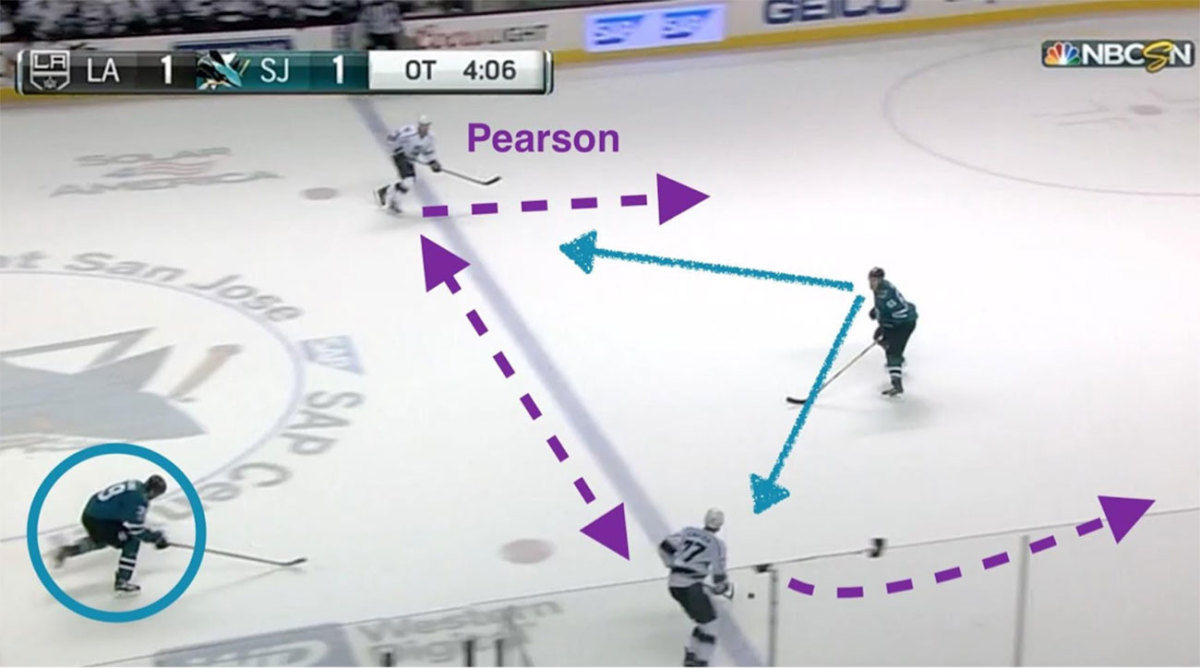
By swinging out so wide, Carter carries Braun with him. The Kings' forward is completely fixated on the goal, with Braun's stick planted in the passing lane. This is a shot the Sharks are willing to concede.
Pearson is slowly conceding ground to Carter. He's lagging from the line Carter has established, creating a greater angle, and also ensuring if Carter shoots low to the far side, the rebound won't get pushed past him.
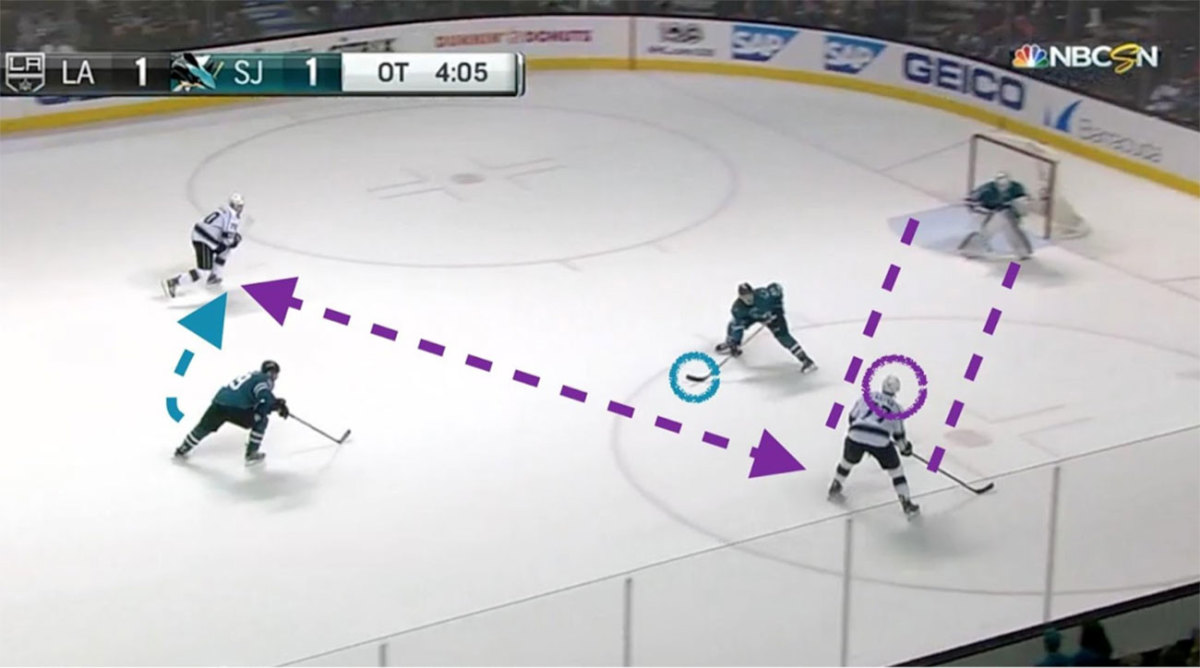
Now below the faceoff dot, Carter hasn't taken his eyes off Martin Jones, who has gone down to defend against a near-post shot. Braun, possibly convinced that Carter is making a play toward goal, or possibly thinking Couture has made up enough ground, switches his stick from the passing lane to attacking Carter. Pearson is still a few feet behind the level of the puck, opening up Carter's angle to pass.
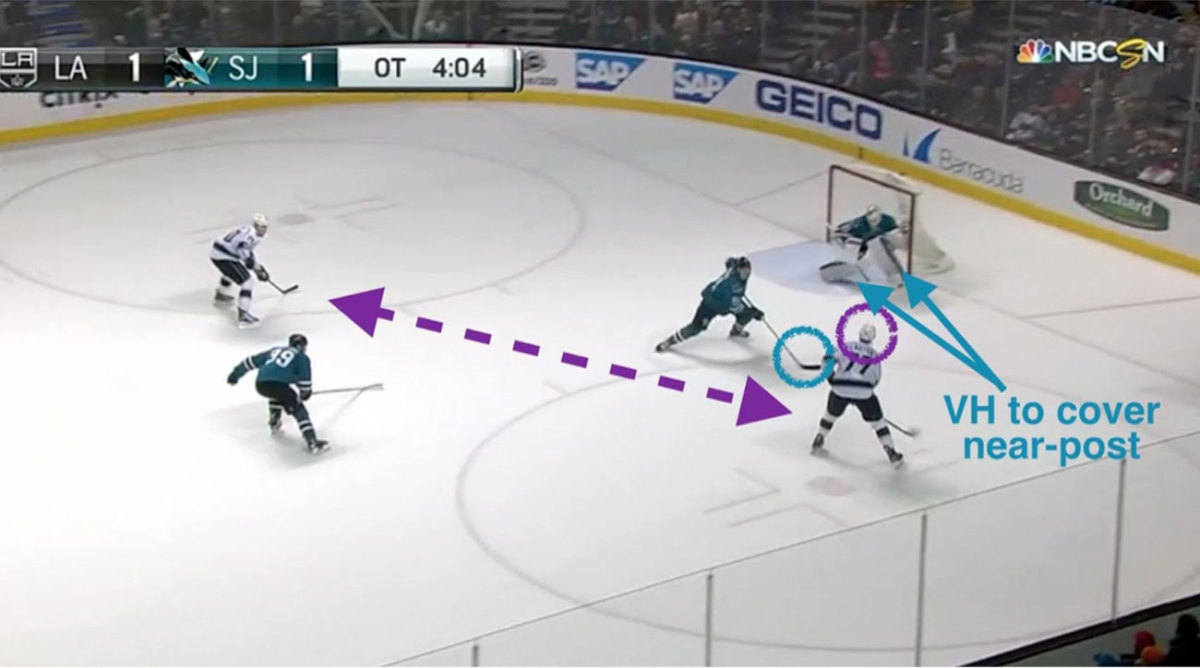
Kings forward Jeff Carter a laid-back All-Star in Los Angeles
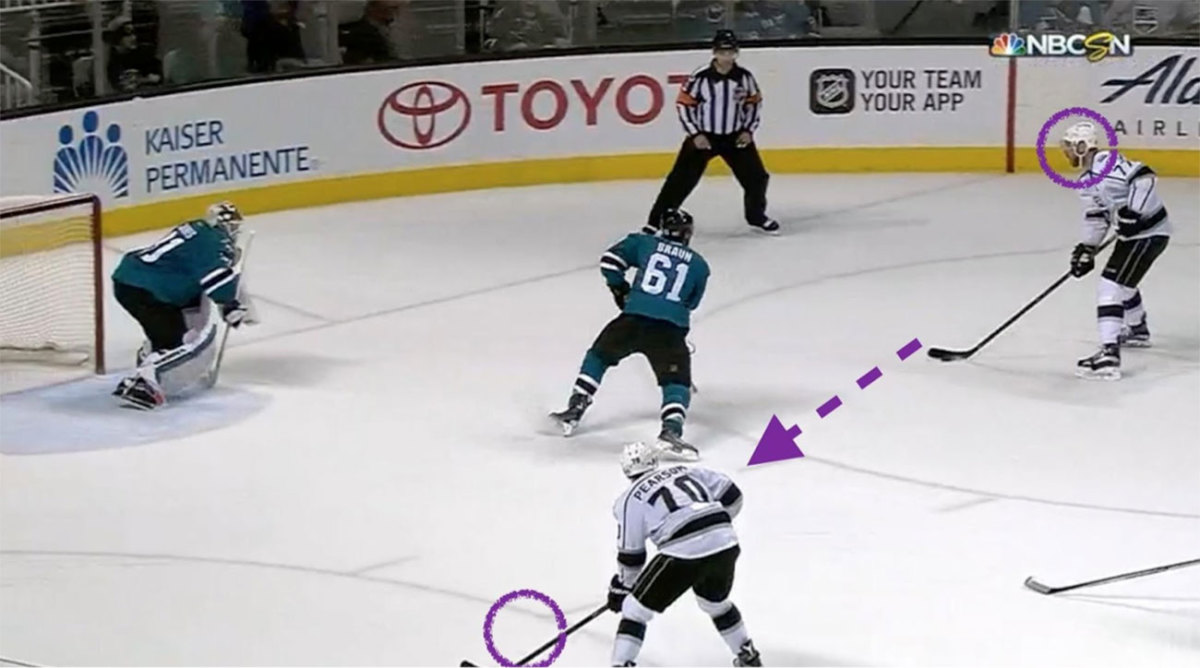
With Braun now committed to playing the shot, Carter has a clear lane to hit Pearson. His eyes never come off Jones, making it difficult for the San Jose goaltender to get a jump on pushing across his crease; if he cheats, he risks Carter shooting to the near-post. Pearson's spacing is key here: The distance he allows Carter to skate ahead of him creates a clear passing lane. Pearson has his stick on the ice, and has his hands and hips in a shooting position.
